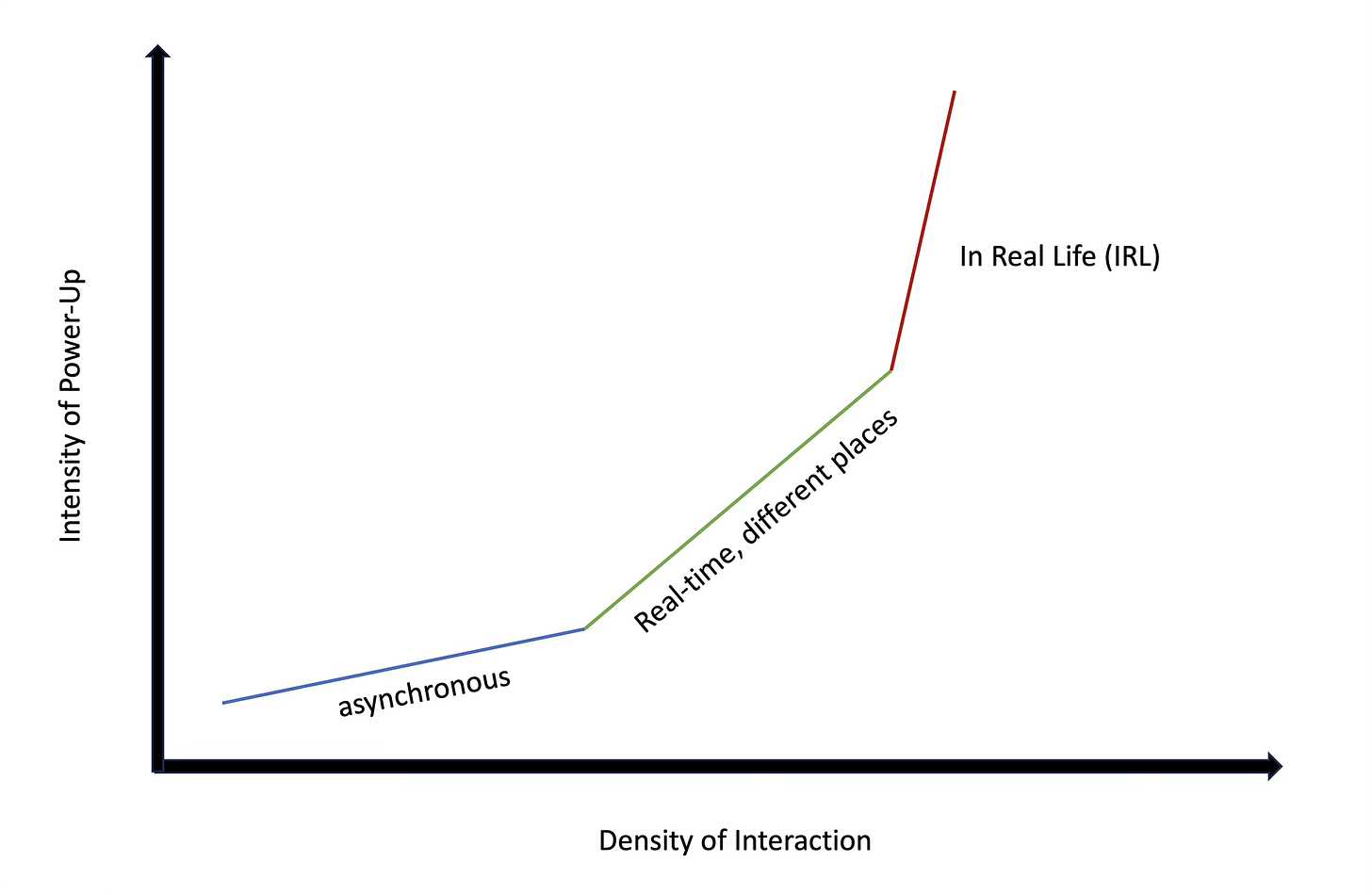Without interaction, human relationships wither, but some interactions are more powerful than others.
I don’t remember what prompted the question, but about a month ago I posted this on Facebook: “Hive Mind: Is there a word for a quip that comes to you far too late but that—if you’d thought of it at the time—would have been really funny? Asking for a friend…”
A Niagara of answers poured in. Mark, a college fraternity brother, posted a Wikipedia link to “l’esprit de l’escalier.” It translates to “the spirit of the staircase” for when you’re already all the way downstairs when a retort comes to you. Ted, my old fencing master, was right behind him with “downstairs wit.” Somebody shared the Irish “afterwit.” Merrick said the German version is “Treppenwitz.” Jodi shared “punburn;” RJ shared “quiperang,” and Mitchel won the day with “A bon motta been.”
The most interesting exchange was with Rebecca, a friend from grad school days who asked if I knew the out-of-print book In a Word; this is “a dictionary of words that don’t exist but ought to.” She thought the book might contain another word for the too-late reply.
A couple weeks later, a copy of In a Word showed up in my mailbox via Better World Books. There was no note (a flaw with Better World’s platform), but I remembered the exchange and pinged Rebecca to ask, “do I have you to thank for this?”
The book’s arrival prompted a spirited set of exchanges with Rebecca, including one about whether L.A. Law (finally streamable on Amazon Prime Video) has held up better than The West Wing (streamable on Max). I feel closer to her than I have in decades.
This got me to wondering about how relationships strengthen and weaken over time, and the differences among digital and analog interactions that create relationships… the way plucking a string on a guitar creates a musical note.
The British anthropologist Robin Dunbar’s famous number says that we can only maintain meaningful relationships with about 150 people at a time.
But how do people move in and out of that meaningful category?
You might have a close relationship with a classmate or coworker that fades when the class is over or one of you gets a new job. If you’re a parent, you might become close with a parent of your kid’s classmate, only for the connection to fade when the kids go their separate ways. These are contextual relationships. If you build up a critical mass (although I don’t know how to measure such criticality) of out-of-context interactions, then the relationship will last longer.
Like radioactive materials, relationships have half lives. The half life of 10 grams of Polonium-210 is the 138 days during which it shrinks to five grams. With relationships, I think a half-life is about a year,* one cycle of the seasons. With no interaction at all, after five years a relationship will lose nearly 97% of its meaning (100 divided in half five times is 3.125).
The reverse is also true: any interaction will extend the half life of a relationship.
In videogames (e.g. almost anything featuring Mario), a “power-up” temporarily gives a character increased strength or other capabilities.
My exchanges with Rebecca and her generous gift of In a Word shows how different forms of interaction create different relationship power-ups.
Here’s a spectrum of relationship power-ups from very weak to strongest:
- Background awareness of a person on social media
- Reading about a person via a mutual connection (email, letter)
- Hearing about a person from a mutual connection in voice-to-voice conversation
- Interacting on social media (liking, commenting)
- Asynchronous one-to-one digital communications (email)
- One-off, almost synchronous digital communications (texting)
- Getting/Sending a physical letter
- Getting/Sending a gift (not a gift card: something curated)
- Real-time back-and-forth texting or messaging
- Participating in a videoconference that includes many others
- Direct voice to voice communication (phone, Skype, etc)
- One to one videoconference
- In Real Life (IRL) group activity (class, conference, concert, game, play, movie)
- One to one IRL interaction
If I were graphing this, then I suspect that one inflection point would come when interactions shift into real-time (videoconferences, phone calls) and another would come when interactions shift into face-to-face IRL.

These inflection points—as the interactions in time and space become more dense—would turn linear increases into exponential ones.
When it comes to relationships, analog is always more powerful than digital. This is why I counsel my mentees always to send paper thank you notes. A thank you email is a task for the recipient. A paper thank you note is a gift. What surprised me about Rebecca’s kind gift was how the physicality of the book created a strong power-up.
Nothing in human relationships competes with the power-up of face-to-face interaction, the eye contact, the handshake, the hug that says “we see each other; we’re in this together.”
Note: if you want to receive articles like this one—plus a whole lot more—straight to your inbox, then please subscribe to my free weekly newsletter!
* Search “relationship half life” and you’ll find results about romantic breakups, like this Urban Dictionary entry. That is not what I’m talking about here. All relationships have half lives: a friend can decay into an acquaintance, a friend can uplevel to become a good friend, etc.
Leave a Reply